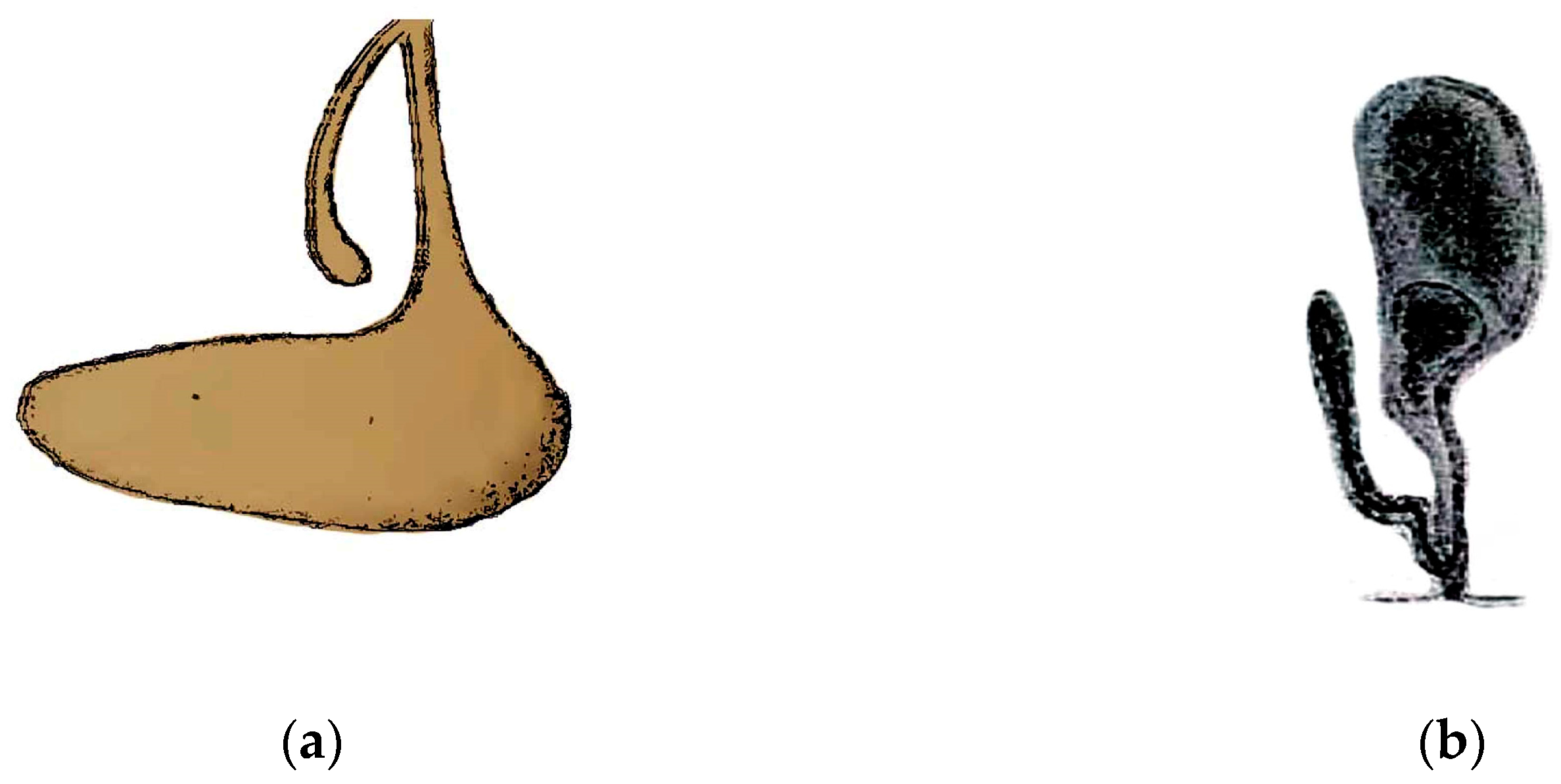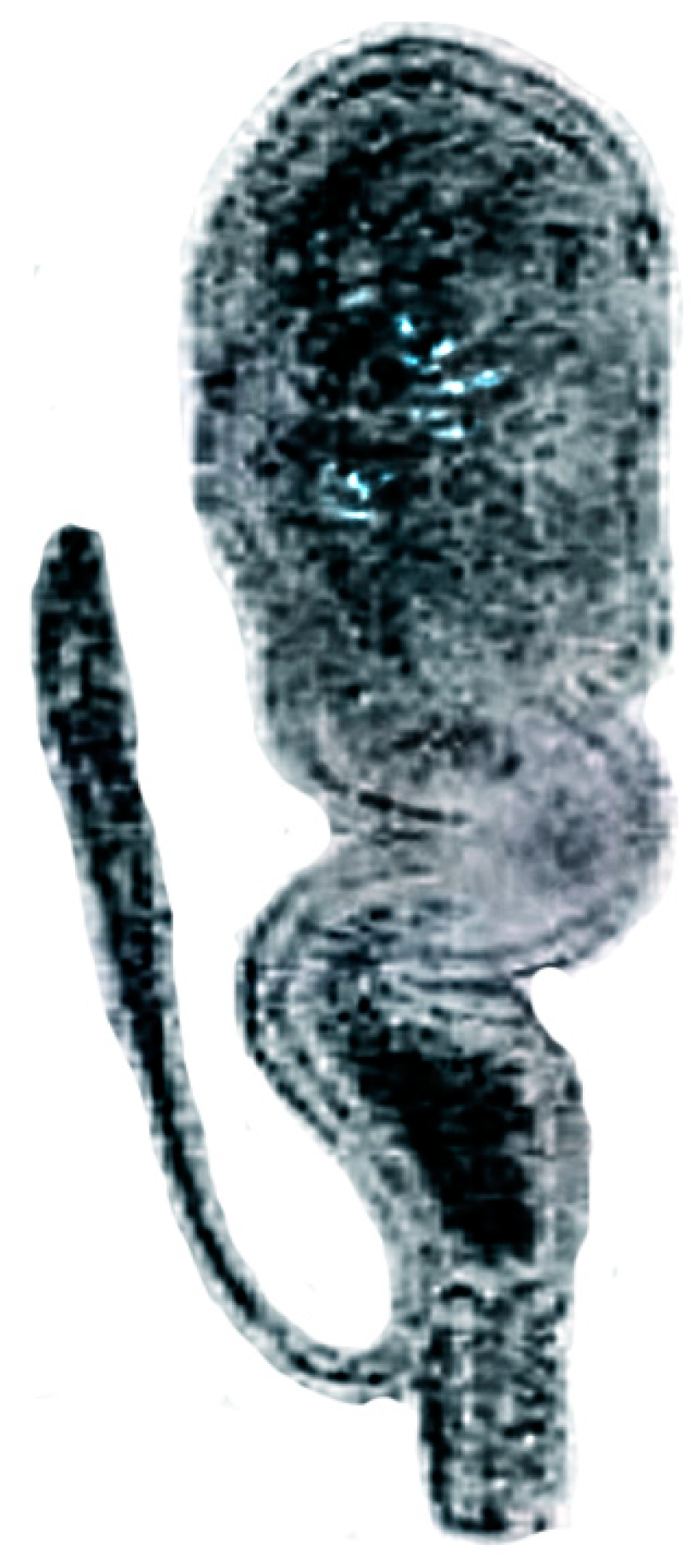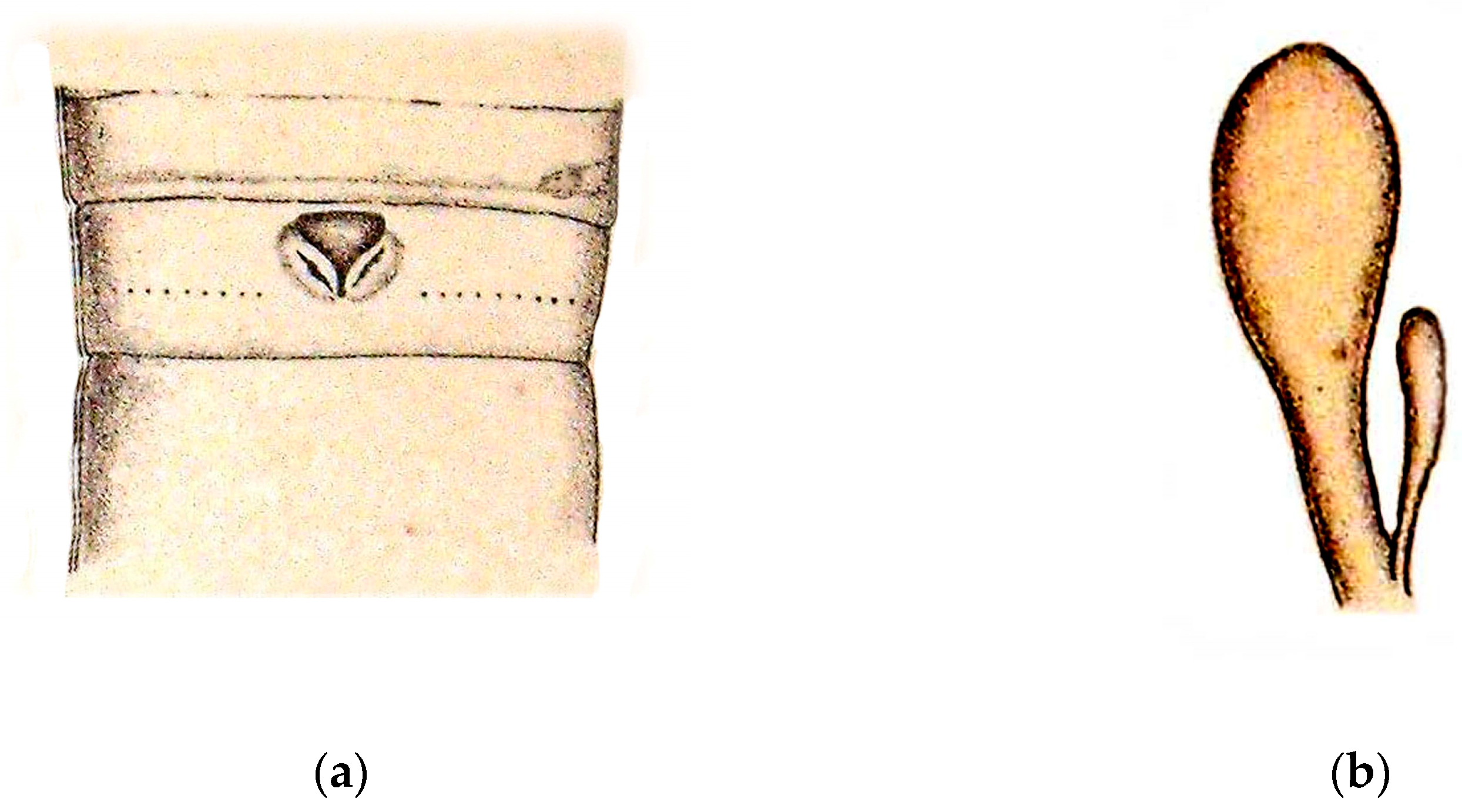Comment on Lone et al. Phylogenetic Relationships in Earthworm Megascolex Species (Oligochaeta: Megascolecidae) with Addition of Two New Species. Diversity 2022, 14, 1006
Abstract
1. Introduction
2. Materials and Methods
3. Results
3.1. Megascolex auriculata Aiyer, 1929
3.2. Megascolex cochinensis cochinensis Stephenson, 1915
3.3. Megascolex filiciseta Stephenson, 1915
3.4. Megascolex konkanensis konkanensis Fedarb, 1898
3.5. Megascolex polytheca polytheca Stephenson, 1915
3.6. Megascolex polytheca zonatus Stephenson, 1915
3.7. Megascolex travancorensis travancorensis Michaelsen, 1910
3.8. Megascolex triangularis Stephenson, 1925
3.9. Megascolex papparensis Lone, Thakur, Tiwari, James & Yadav, 2022
3.10. Megascolex vazhichlensis Lone, Thakur, Tiwari, James & Yadav, 2022
3.11. Other Concerns
4. Conclusions
Author Contributions
Data Availability Statement
Acknowledgments
Conflicts of Interest
References
- Magalhães, W.F.; Hutchings, P.; Oceguera-Figueroa, A.; Martin, P.; Schmelz, R.M.; Wetzel, M.J.; Wiklund, H.; Maciolek, N.J.; Kawauchi, G.Y.; Williams, J.D. Segmented worms (Phylum annelida): A celebration of twenty years of progress through Zootaxa and call for action on the taxonomic work that remains. Zootaxa 2021, 4979, 190–211. [Google Scholar] [CrossRef] [PubMed]
- Chang, C.H.; Lin, S.M.; Chen, J.H. Molecular systematics and phylogeography of the gigantic earthworms of the Metaphire formosae species group (Clitellata: Megascolecidae). Mol. Phylogenet. Evol. 2008, 49, 958–968. [Google Scholar] [CrossRef] [PubMed]
- Csuzdi, C.; Chang, C.H.; Pavlícek, T.; Szederjesi, T.; Esopi, D.; Szlávecz, K. Molecular phylogeny and systematics of native North American lumbricid earthworms (Clitellata: Megadrili). PLoS ONE 2017, 12, e0181504. [Google Scholar] [CrossRef]
- Martinsson, S.; Erséus, C. Cryptic Clitellata: Molecular species delimitation of clitellate worms (Annelida): An overview. Diversity 2021, 13, 36. [Google Scholar] [CrossRef]
- Lone, A.R.; Thakur, S.S.; Tiwari, P.; James, S.W.; Yadav, S. Phylogenetic Relationships in Earthworm Megascolex Species (Oligochaeta: Megascolecidae) with Addition of Two New Species. Diversity 2022, 14, 1006. [Google Scholar] [CrossRef]
- Stephenson, J. The Fauna of British India, including Ceylon and Burma—Oligochaeta; Taylor and Francis: London, UK, 1923. [Google Scholar]
- Narayanan, S.P.; Paliwal, R.; Kumari, S.; Ahmed, S.; Thomas, A.P.; Julka, J.M. Annelida: Oligochaeta. In Faunal Diversity of Biogeographic Zones of India: Western Ghats; Chandra, K., Raghunathan, C., Suresh, P.M., Subramanian, K.A., Rizvi, A.N., Eds.; Zoological Survey of India: Kolkata, India, 2020; pp. 87–102. [Google Scholar]
- Narayanan, S.P.; Kumari, S.; Kurien, V.T.; Thomas, A.P.; Paliwal, R.; Julka, J.M. A comprehensive checklist of the earthworms (Annelida: Clitellata: Megadrili) of Sri Lanka, a component of the Western Ghats—Sri Lanka biodiversity hotspot. Trav. Mus. Natl. Hist. Nat. Grigore Antipa 2021, 64, 7–36. [Google Scholar] [CrossRef]
- Michaelsen, W. Die Oligochätenfauna der Vorderindisch-CeylonischenRegion. Abh. Geb. Naturw. Hamburg 1910, 19, 1–108. [Google Scholar]
- Naik, A.; Narayanan, S.P.; Palita, S.K.; Thomas, A.P.; Paliwal, R. Two new species of the genus Megascolex Templeton, 1844 (Clitellata, Megascolecidae) from the Eastern Ghats of Odisha state, India. Zootaxa 2024, 5424, 569–580. [Google Scholar] [CrossRef]
- Narayanan, S.P.; Sathrumithra, S.; Christopher, G.; Thomas, A.P.; Julka, J.M. Checklist of the earthworms (Oligochaeta) of Kerala, a constituent of Western Ghats biodiversity hotspot, India. Zootaxa 2016, 4193, 117–137. [Google Scholar] [CrossRef] [PubMed]
- Thakur, S.S.; Lone, A.R.; Tiwari, N.; Jain, S.K.; James, S.W.; Yadav, S. A contribution to the earthworm diversity (Clitellata, Moniligastridae) of Kerala, a component of the Western Ghats biodiversity hotspot, India, using integrated taxonomy. Anim. Biodivers. Conserv. 2021, 44, 117–137. [Google Scholar] [CrossRef]
- Narayanan, S.P.; Anuja, R.; Thomas, A.P.; Paliwal, R. A new species of Moniligaster Perrier, 1872 (Annelida, Moniligastridae) from India, with status revision of M. deshayesi minor Michaelsen, 1913. Opusc. Zool. Bp. 2022, 53, 31–50. [Google Scholar] [CrossRef]
- Narendran, T.C. An Introduction to Taxonomy; Zoological Survey of India: Kolkata, India, 2006.
- Stephenson, J. On some Indian Oligochaeta, mainly from Southern India and Ceylon. Mem. Ind. Mus. 1915, 6, 35–108. [Google Scholar]
- Stephenson, J. On some Oligochaeta mainly from Assam, South India, and the Andaman Islands. Rec. Ind. Mus. 1925, 27, 43–73. [Google Scholar] [CrossRef]
- Aiyer, K.S.P. An account of the Oligochaeta of Travancore. Rec. Ind. Mus. 1929, 31, 13–76. [Google Scholar]
- ICZN. International Code of Zoological Nomenclature, 4th ed.; The International Trust for Zoological Nomenclature 1999: London, UK, 2012; Available online: https://code.iczn.org/types-in-the-species-group/article-72-general-provisions/?frame=1 (accessed on 3 December 2022).
- National Biodiversity Authority. Guidelines for Designated Repositories; National Biodiversity Authority: Chennai, India, 2023. Available online: http://nbaindia.org/uploaded/pdf/Guidelines_for_Designated_Repositories.pdf (accessed on 1 March 2023).
- Tiwari, N.; Lone, A.R.; Thakur, S.S.; James, S.W.; Yadav, S. Three uncharted endemic earthworm species of the genus Eutyphoeus (Oligochaeta: Octochaetidae) from Mizoram, India. Zootaxa 2021, 5005, 041–061. [Google Scholar] [CrossRef] [PubMed]
- Fedarb, S.M. On some earthworms from India. J. Bombay Nat. Hist. Soc. 1898, 11, 431–437. [Google Scholar]





Disclaimer/Publisher’s Note: The statements, opinions and data contained in all publications are solely those of the individual author(s) and contributor(s) and not of MDPI and/or the editor(s). MDPI and/or the editor(s) disclaim responsibility for any injury to people or property resulting from any ideas, methods, instructions or products referred to in the content. |
© 2024 by the authors. Licensee MDPI, Basel, Switzerland. This article is an open access article distributed under the terms and conditions of the Creative Commons Attribution (CC BY) license (https://creativecommons.org/licenses/by/4.0/).
Share and Cite
Narayanan, S.P.; Paliwal, R.; Thomas, A.P.; Julka, J.M. Comment on Lone et al. Phylogenetic Relationships in Earthworm Megascolex Species (Oligochaeta: Megascolecidae) with Addition of Two New Species. Diversity 2022, 14, 1006. Diversity 2024, 16, 732. https://doi.org/10.3390/d16120732
Narayanan SP, Paliwal R, Thomas AP, Julka JM. Comment on Lone et al. Phylogenetic Relationships in Earthworm Megascolex Species (Oligochaeta: Megascolecidae) with Addition of Two New Species. Diversity 2022, 14, 1006. Diversity. 2024; 16(12):732. https://doi.org/10.3390/d16120732
Chicago/Turabian StyleNarayanan, Sasankan Prasanth, Rahul Paliwal, Ambattu Paili Thomas, and Jatinder Mohan Julka. 2024. "Comment on Lone et al. Phylogenetic Relationships in Earthworm Megascolex Species (Oligochaeta: Megascolecidae) with Addition of Two New Species. Diversity 2022, 14, 1006" Diversity 16, no. 12: 732. https://doi.org/10.3390/d16120732
APA StyleNarayanan, S. P., Paliwal, R., Thomas, A. P., & Julka, J. M. (2024). Comment on Lone et al. Phylogenetic Relationships in Earthworm Megascolex Species (Oligochaeta: Megascolecidae) with Addition of Two New Species. Diversity 2022, 14, 1006. Diversity, 16(12), 732. https://doi.org/10.3390/d16120732





